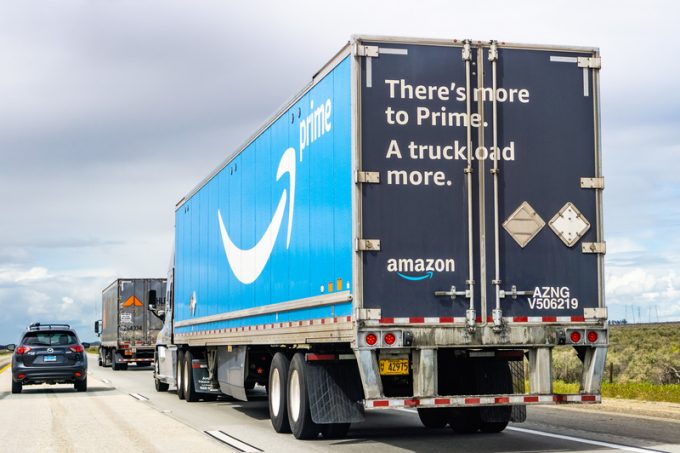DVZ radar: DHL Express awaits the next e-commerce star
It is all about networking

Already burdened with escalating costs, retailers now face a desperate struggle to respond to Amazon’s move to next-day delivery for free shipping.
For some it will be the end of the road, predicts John Haber, chief executive of Spend Management Experts, an Atlanta-based transportation procurement consultancy.
Many large retailers have favoured a free delivery charge model based on a purchase threshold, rather than go for a subscription approach like Amazon Prime (at which the new offering is aimed) or a flat rate model, Mr Haber noted. This has allowed them to charge a premium for faster deliveries.
Making next-day delivery that standard, as Amazon is trying to do, poses a big dilemma for these merchants, he said.
“It’s a big financial issue. It’s going to be difficult for many retailers to match.”
Based on the delivery rate structures of UPS, premiums for a shipment originating from the west coast are at least 64% higher for deliveries to the US midwest and east coast, and up to 180% higher to markets in parts of Oregon, Idaho, Utah and Arizona, Spend Management found.
A switch from two-day to next-day delivery pushes up premiums, on average, by 67% for UPS customers, said the consultancy, adding that FedEx likely will produce similar results.
Combined with other cost increases, the steep rise in rates adds to a perfect storm for shippers.
FedEx and UPS may have shown some restraint with rate increases of 4.9% this year, but this has only been part of the story. They have been more aggressive with surcharges, such as volumetric charges, additional handling fees for packages over 70lbs and other ancillary charges like address correction.
Surcharges on UPS’s SurePost service have climbed over 80% over the past three years, Mr Haber pointed out. Surcharges and premiums can elevate the price of shipping a TV set, which can be moved for about $75 as an LTL shipment, to a dizzying $1,000.
On top of this, shippers are facing financial pain from the latest round of tariffs announced by the White House.
“That’s impacting retailers tremendously,” Mr Haber said.
Spend Management advises shippers to examine their options thoroughly. Juggling carriers may alleviate the pain, but lack of choice in the North American market means that this has limited potential, he said. Pick-ups in stores or at third-party locations should yield better results. In-store pick-ups not only eliminate last-mile shipping costs but often lead to additional purchases to boot.
For many retailers the effort to match the move to second-day delivery as the free shipping standard has been quite challenging, so Amazon’s move to shift the goal posts again is quite worrying for many. The e-commerce behemoth has made it clear it intends to make next-day delivery the standard for free shipping in the US.
The trend has intensified in the wake of signals from Walmart that it is also preparing to make next-day delivery its default mode for free shipping.
And according to Spend Management, the trend is unlikely to reverse. It cited figures from DynamicAction, a provider of retail analytics, which show that retail transactions with free shipping went up 13% in North America last year and had climbed 8% by mid-April this year.
However, Mr Haber believes the free shipping concept is unsustainable.
Amazon is spending $800m this quarter alone to make the transition to next-day free shipping – “the entire annual revenue for some retailers”, he said. “They are not able to subsidise those levels for the long run.”
Amazon spent an estimated $61.7bn on logistics last year, which translates into about 26% of its net sales. This augurs doom for many players.
“There will be a lot of casualties along the way,” Mr Haber said, adding: “Amazon is already putting a lot of people out of business.”
The move is also a big challenge for the parcel carriers. The large players are equipped to handle next-day deliveries, but the question is at what cost to the shipper they can do so, Mr Haber said. Unlike them, Amazon can subsidise its higher delivery costs from the revenues in its cloud-based business.
UPS, FedEx and DHL all reported downward pressure on margins in their e-commerce business in their most recent quarterly results. As their surcharge moves indicate, they are trying hard to steady their yields, which makes it unlikely that they can lower their overnight rates significantly.
Amazon has signalled that it intends to follow up on its domestic initiative with a similar move in the international arena, but has not provided any details so far. Mr Haber thinks the impact will be less dramatic than in the US.
“It will be easier for people to compete with Amazon internationally,” he said, pointing to a greater number of carriers in markets like Europe, which gives merchants more options at competitive prices.
Comment on this article